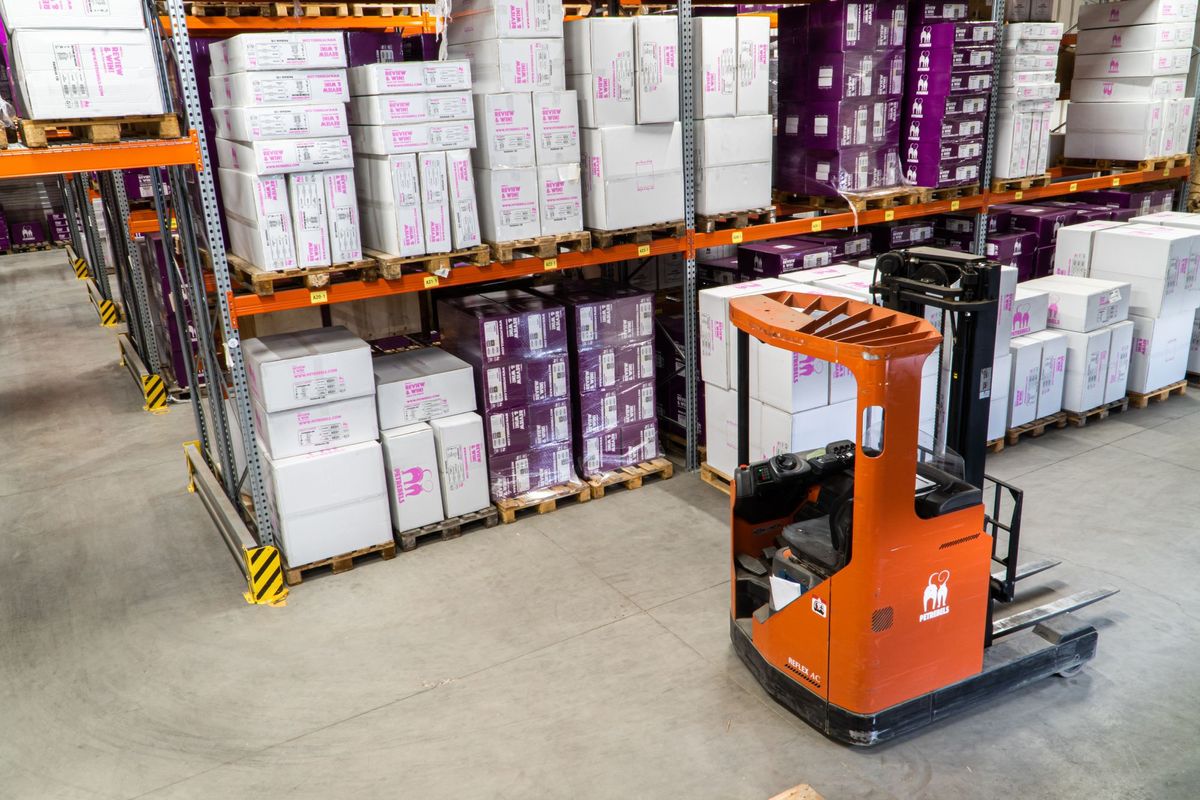5 Effective Ways of Inventory Check and Management

Lack of proper planning and tracking of inventories can result in uncertainties and potential losses. Businesses face multiple challenges associated with inventory checks and management. Supply chain disruptions, shifting consumer preferences, and volatile market conditions are some of the hurdles that can wreak havoc on your inventory management plans.
Fortunately, there are some strategies you can take to address these challenges. Let’s delve into the most common inventory check and management problems, along with appropriate solutions.
How to Solve the Problem of Managing Inventory
Here are the steps that you should take to do an inventory check and management:
1) Frequent Stock Inventory Checking

Regular inventory check is crucial for every business, as it saves you from a multitude of issues. These include overstocking, understocking, costly errors, dissatisfied customers, and even financial losses. When you ensure that you have the right quantity of required products, you can use your resources appropriately. This will help you in de-listing out-of-stock products and arranging them within due time to avoid customer loss.
Digital or barcode on paper can significantly resolve the problem for you. It involves assigning a unique number and parallel lines to each stock item. A barcode contains information about the product, such as its name, SKU(Stock Keeping Unit), price, and location in your inventory. Here’s how it can resolve your most common issues;
- Eliminates Manual Errors: Manual data entry is error-prone. Barcoding significantly eradicates the issues of human-based errors. Scanning barcodes ensures that the data entered into your inventory management system is 10,000 times more accurate than manual entry.
- Speeds Up Processes: Barcode scanning works incredibly fast. This efficiency translates into quicker inventory counts, reducing downtime and disruption of normal operations.
- Improved Tracking: Barcodes allow for detailed tracking of product movements within your warehouse or store. You can easily trace a product's journey from receiving to shipping. It facilitates locating items and managing recalls if required.
2) Determine Accurate Order Timing and Quantity in Warehouse Inventory

Accurate order timing and quantity determination are the backbone of an effective stock inventory check and management. It’s because precise timing ensures that you replenish inventory before it runs out. This prevents the dreaded stockouts that lead to lost sales and customer dissatisfaction.
Additionally, ordering the correct quantity at the right time minimizes holding costs, which include expenses like storage space and capital tied up in excess inventory. As a rule of thumb, inventory holding costs should be less than 20-30 percent of total inventory value.
On the other hand, its optimization improves profitability and streamlines cash flow by using financial resources efficiently. When you have the right products at the right time, you can enhance customer satisfaction and increase the chances of repeat business. Inventory management software can help you with this by:
- Demand Forecasting: Inventory management software often includes sophisticated demand forecasting capabilities. These tools analyze historical sales data and market trends, predicting future seasonal demand for your products. This helps you order the right quantity of items at the right time, reducing the risk of overstocking or stockouts.
- Optimal Order Quantity: Through mathematical models like Economic Order Quantity (EOQ) or more advanced algorithms, inventory management tools can calculate the optimal order quantity for each product. This minimizes holding costs while ensuring you have enough inventory to meet demand.
3) Deal with Products that are Difficult to Sell(H3)

Managing stock inventory also includes addressing products that are challenging to sell. These products may include slow-moving items, making up 30% to 35% of stock, obsolete inventory, or those with limited demand.
When these products linger in your inventory, they tie up valuable capital and storage space, reducing profitability. One approach to tackle this issue is through strategic promotions. Promotions involve offering enticing benefits to customers to encourage the sale of inventory items that might otherwise linger on the shelves. Here are the types of benefits you can give to your customers:
- Discounts: General discounts on specific products or categories can stimulate demand and clear out slow-moving inventory.
- Coupons: Coupons offer customers immediate discounts on specific products, incentivizing purchases and attracting bargain seekers.
- Bundle Products: Bundling combines slow-moving items with popular ones, offering customers added value and encouraging sales of less desirable products.
- Loyalty Program: Loyalty programs mean rewarding your repeat customers with points, discounts, or exclusive offers, often promoting the sale of challenging inventory items.
By adopting these methods, businesses can stimulate demand for these products and ultimately improve their inventory turnover rates. This helps clear out slow-moving items and attracts bargain-conscious customers looking for a deal.
4) Maintain Proper Inventory Levels

Another crucial step you can take is to maintain appropriate inventory levels. This saves you from both overstocking and understocking inventory items. As per the Retail Vision Study, minimizing overstock and out-of-stock items can chop off inventory costs by 10%. Remember, the consequences of frequent out-of-stock items can be severe, including lower profits and lost revenue. Your customers may start to seek alternatives when they can't find what they want, lowering the number of returning customers.
On the flip side, overstocking or inventory build-up often leads to substantial business losses due to higher inventory maintenance and handling costs. To mitigate these potential losses, you can rely on inventory management systems to gain deep insights into demand patterns, seasonal variations, and product life cycles. The stock inventory check and management system provides insights that help you in data-driven decision-making and maintain the appropriate balance between supply and demand.
5) Match Physical Quantities with Inventory Receipts and Payment Ledgers

Your product quantities or total stock often don't match the numbers given on your inventory receipts and payment ledgers. This clearly indicates that your inventory management processes may be in disarray, resulting in many problems. These include financial discrepancies, operational inefficiencies, and customer dissatisfaction.
But there's nothing to stress about! An inventory check and management software can help you eliminate the inefficiencies in managing and organizing inventory. It resolves inventory discrepancies by providing real-time tracking and precise record-keeping.
Furthermore, it ensures that physical inventory counts align with digital records and payment ledgers. Due to these incredible benefits, many businesses are now using inventory management software, which is why its market is expected to reach USD 3.82 billion by 2028.
Use Software for Warehouse Inventory Check

A proper inventory check and management are crucial to ensure you don't leave your customers dissatisfied. It also safeguards you from warehouse inventory holding charges.
For all this, this app is here to assist you in seamlessly navigating all these challenges! Second-by-second real-time inventory data updates give you immediate access to your stock levels. Barcode scanning simplifies stock in and out processes, promoting precision and efficiency. Furthermore, it allows role assignment and access control, safeguarding your sensitive information. So, get it now and make your inventory management process hassle-free!


